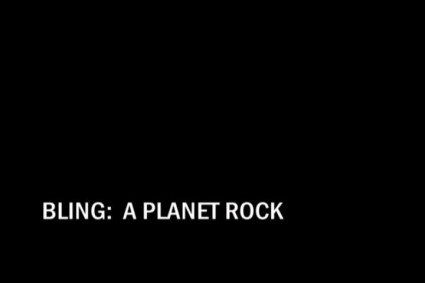
BUY IT AT AMAZON: CLICK HERE!
STUDIO: Image Entertainment
MSRP: $19.99
RATED: NOT RATED
RUNNING TIME: 87 Minutes
SPECIAL FEATURES:
-Nothing. Chew on that with your forty carat grill.
The Pitch
Like Blood Diamond without the white man to save them from themselves.
The Humans
Kanye West, Raekwon, Paul Wall, Ishmael Beah, Tego Calderon
The Nutshell
We all know that diamonds are the perfect gift to give your wives in an extremely overdramatic Rube Goldberg set of contrivances culminating in everyone at the fancy restaurant/exotic country marketplace/car interior applauding your spectacular taste and superlative romanticism, but what you probably don’t (or more hopefully, also) know is that the procurement of some of these diamonds has resulted in a catastrophic loss of life and savage conditions in the region for many years, only recently put to rest. Bling takes some prominent hip-hop artists, many of whom utilize diamonds prominently in their music and lifestyle, to the heart of the devastation and tries to make some connections between a music meant to liberate using a symbol of brutal oppression for others the music is meant to touch.

"And he’s all running around screaming ‘My son! My son!’ You really haven’t seen it? You’ve got to check it out, man."
The Lowdown
The Onion’s new book Our Dumb World (great, by the way) has a brief cutting passage in its entry on Sierra Leone: “American rap artist Kanye West releases ‘Diamonds From Sierra Leone’, a highly critical indictment of those who have exploited the African nation for their own monetary gain. The song goes platinum and earns West $1.3 million in its first week.”. I mention it here because the writing staff of the Onion manages to make a more cohesive argument in a couple of sentences than Bling: A Planet Rock can muster throughout its ninety minute running time. The prevailing sense one gets from watching Bling is that of a missed opportunity. Its tagline of “Blood, Diamonds & Hip-Hop” suggests some sort of sociological examination of the connection between the forces that oppress those in Sierra Leone and music made by those across the ocean whose basis oftentimes is entirely comprised of showcasing the titular diamond-encursted jewelry that ennobles the conflict that is the basis of this film. However, save for a few moments when these things are all bridged together and seem to be acting in conjunction towards making some kind of statement about how they intersect, the film just seems to be a travelogue showing us the aftermath of a long and bloody conflict that has left a part of the world devastated.
What sinks the documentary more than anything is the lack of cohesion to all of its ideas. It basically ends up as a travelogue of misery for the visiting hip-hop artists, and instead of righteous indignation as to the living conditions and general squalor these people are living in, you get not much in the way of emotional response from the travelers, and while a huge “oh, the humanity!” display in histrionics would feel disingenuous, you feel that the reaction is strangely unmoved for most of the people. More than likely they weren’t willing to drop stoic facades in the face of what they saw, but it puts a distance between the viewer and subject. It also doesn’t help that some of the participants seem genuinely demented; such as Paul Wall’s business partner who states he loves diamonds more than his children on the basis that he spends more time with them daily (by that stunning turn of logic, there’s a large portion of Americans who love feces disposal more than their offspring) at his job. Moments like these work even further towards creating an emotionally detached viewing experience.
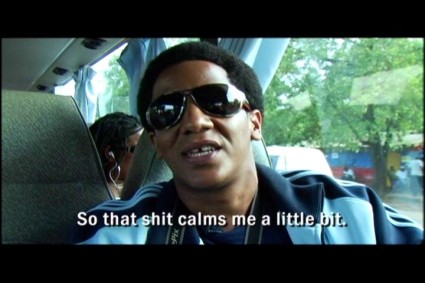
After they took Tego aside and explained the documentary didn’t have to go into details as personal as that, the shoot continued much more smoothly.
The doc’s saving grace is the inclusion of author Ishmael Beah (A Long Way Gone: Memoir of a Boy Soldier) who is returning to his former home for the first time since he left for America. He is the emotional and eloquent core of this film, providing clarity and a pulse when the other characters’ reaction to their surroundings are underwhelming. It could be that he has a frame of reference for what happened and an acute understanding of the region’s conflict, but he also serves as the personal core of the movie who makes you care for the material far more than the vacuous hip-hop envoys. Also worthy of mention is some really adroit editing on the part of Raquel Cepeda, who manages to make some extremely captivating sequences come together quite nicely on the basis of her editing. Of import is the opening credit sequence (which the body of the film unfortunately isn’t able to live up to) and the one sequence where you finally feel energy from the participants of the film as their questioning of a businessman as to whether he truly believes his company is helping the region is intercut with an eerily similar response from an Englishman decades earlier. Its little glimpses like this hinting towards a better film, suggesting that with a little more time and some more interesting travel guests she could’ve made something substantially better than what the end result is here.
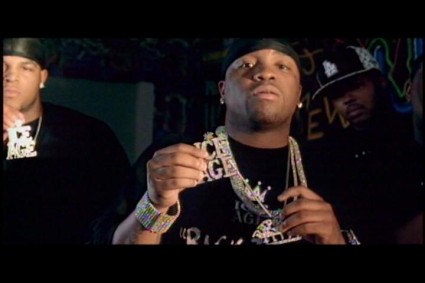
It’s easy to underestimate the popularity of Ray Romano as woolly mammoth.
So in the end, there’s an emotional gulf between material and viewer here, and it’s sort of baffling to be honest. This is a subject that has been dramatized and utilized to strong effect in recent memory, so there’s a precedent for something of this nature working. And it’s not that their reaction is necessarily incorrect; we have to face the fact that in a consumer-based society such as ours we’re going to be oppressing another people with the purchases and choices we make here. Paul Wall’s diplomatic “we can’t fix this problem alone” statement in and of itself isn’t annoying, but coming from someone who makes a living off of absurd diamond accoutrement for ones grill it’s nearly insufferable. The concluding performance at a nightclub would feel like a release and a hopeful endnote showing the positive, restorative power of music/hip-hop in a place ravaged by endless war if not for the muddlescrum that came before it. There’s a good documentary to be had out of this material, but this certainly ain’t it.
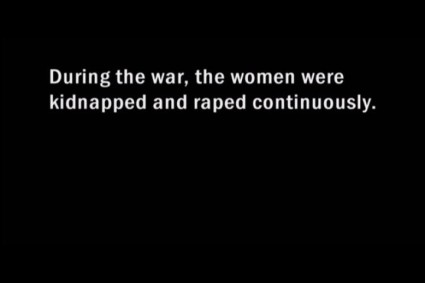
Jesus….
The Package
The cover art is the best thing about the entire production, honestly: it’s a stark and dynamic image that states the film’s subject in an aesthetically interesting way. Although Kanye West’s top billing is more than a little misleading (he only appears for a few moments in the film’s opening sequence), one can understanding utilizing him as a main advertising point. As with most documentaries, the varying sources of film and video lead to some wide discrepancies in quality. In terms of extras, you get nothing, and it’s a lack of any bonus material to add some depth or perhaps a stronger clarity of purpose in terms of what was being attempted makes this a release I can’t recommend.
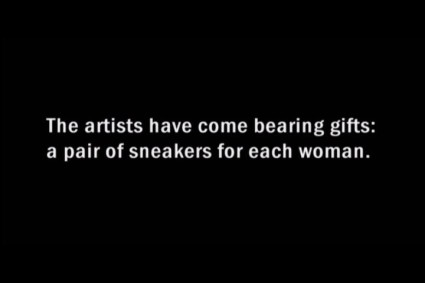
Well, thank god.
5.5 out of 10